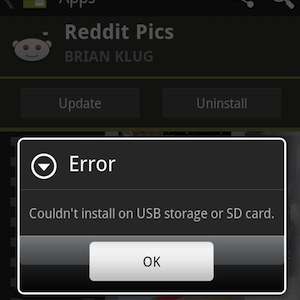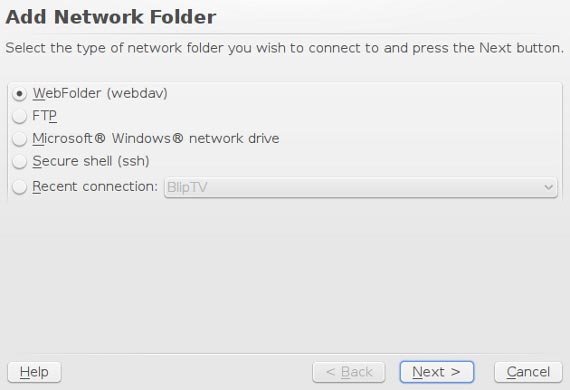FreeRADIUS を LinOTP 2 と使ってワンタイムパスワードで二要素認証を行う方法
目的と想定読者
このドキュメントは、LinOTP 2 Community Edition をバックエンドにして FreeRADIUS で OTP による二要素認証を実装したいシステム管理者、ネットワーク管理者、認証基盤担当者向けです。前提知識:基本的な FreeRADIUS の設定とサーバー管理の経験。
概要
LinOTP はワンタイムパスワードのバックエンドで、ハードウェアトークン、ソフトウェアトークン、SMS など幅広いトークン形式をサポートします。Enterprise Edition には FreeRADIUS 用の C モジュールが同梱されますが、Community Edition(AGPLv3)でも簡単な Web API により認証照会が可能です。本記事ではその Web API を呼び出す方法と、FreeRADIUS の rlm_perl モジュールを使った実装例を示します。
API の概要
LinOTP の認証 API は非常にシンプルで、たとえば次のエンドポイントで検証できます。
https://yourServer/validate/check?user=....&pass=....または
https://yourServer/validate/simplecheck?user=...&pass=...これらは指定したユーザーとパスワード(ここでは OTP)を受け取り、有効かどうかを返します。レスポンス形式は LinOTP のバージョンや設定によって異なるので、実環境での挙動を事前に確認してください。
重要: 本番導入では必ず TLS を有効にし、サーバー証明書を検証すること。
FreeRADIUS 側の考え方
FreeRADIUS は rlm_exec などで外部プログラムを呼び出す方法もありますが、ここでは rlm_perl を使って直接 HTTP リクエストを行う簡潔な方法を示します。rlm_perl を用いると、認証フェーズで LinOTP の API を呼び、結果に応じて RADIUS の戻り値を返すことができます。
rlm_perl のドキュメントにあるサンプルを authenticate 関数だけ書き換えれば実装できます。
サンプル実装(そのままコピー可)
以下は記事公開時点で動作する簡易サンプルの perl モジュールです。実運用するにはエラーハンドリング、タイムアウト設定、証明書検証、ログ強化、冗長化対応を追加してください。
#
# This program is free software; you can redistribute it and/or modify
# it under the terms of the GNU General Public License as published by
# the Free Software Foundation; either version 2 of the License, or
# (at your option) any later version.
#
# This program is distributed in the hope that it will be useful,
# but WITHOUT ANY WARRANTY; without even the implied warranty of
# MERCHANTABILITY or FITNESS FOR A PARTICULAR PURPOSE. See the
# GNU General Public License for more details.
#
# You should have received a copy of the GNU General Public License
# along with this program; if not, write to the Free Software
# Foundation, Inc., 51 Franklin St, Fifth Floor, Boston, MA 02110-1301, USA
#
# Copyright 2002 The FreeRADIUS server project
# Copyright 2002 Boian Jordanov <[email protected]>
# Copyright 2011 linotp project <[email protected]>
#
# Based on the Example code for use with rlm_perl
#
#
=head1 NAME
freeradius_perl - Perl module for use with FreeRADIUS rlm_perl, to authenticate against
LinOTP http://www.linotp.org
=head1 SYNOPSIS
use with freeradius:
Configure rlm_perl to work with LinOTP:
in /etc/freeradius/users
set:
DEFAULT Auth-type := perl
in /etc/freeradius/modules/perl
point
perl {
module =
to this file
in /etc/freeradius/sites-enabled/
set
authenticate{
perl
[....]
=head1 DESCRIPTION
This module enables freeradius to authenticate using LinOTP.
TODO:
* checking of server certificate
=head2 Methods
* authenticate
=head1 AUTHOR
Cornelius Koelbel ([email protected])
=head1 COPYRIGHT
Copyright 2011
This library is free software; you can redistribute it
under the GPLv2.
=head1 SEE ALSO
perl(1).
=cut
use strict;
use LWP 5.64;
# use ...
# This is very important ! Without this script will not get the filled hashesh from main.
use vars qw(%RAD_REQUEST %RAD_REPLY %RAD_CHECK $URL);
use Data::Dumper;
$URL = "https://localhost/validate/simplecheck";
# This is hash wich hold original request from radius
#my %RAD_REQUEST;
# In this hash you add values that will be returned to NAS.
#my %RAD_REPLY;
#This is for check items
#my %RAD_CHECK;
#
# This the remapping of return values
#
use constant RLM_MODULE_REJECT=> 0;# /* immediately reject the request */
use constant RLM_MODULE_FAIL=> 1;# /* module failed, don't reply */
use constant RLM_MODULE_OK=> 2;# /* the module is OK, continue */
use constant RLM_MODULE_HANDLED=> 3;# /* the module handled the request, so stop. */
use constant RLM_MODULE_INVALID=> 4;# /* the module considers the request invalid. */
use constant RLM_MODULE_USERLOCK=> 5;# /* reject the request (user is locked out) */
use constant RLM_MODULE_NOTFOUND=> 6;# /* user not found */
use constant RLM_MODULE_NOOP=> 7;# /* module succeeded without doing anything */
use constant RLM_MODULE_UPDATED=> 8;# /* OK (pairs modified) */
use constant RLM_MODULE_NUMCODES=> 9;# /* How many return codes there are */
# Function to handle authorize
sub authorize {
# For debugging purposes only
# &log_request_attributes;
# Here's where your authorization code comes
# You can call another function from here:
&test_call;
return RLM_MODULE_OK;
}
# Function to handle authenticate
sub authenticate {
# For debugging purposes only
# &log_request_attributes;
my $ua = LWP::UserAgent->new();
my $req = HTTP::Request->new(GET => $URL . "?user=" .
$RAD_REQUEST{'User-Name'} . "&pass=" .
$RAD_REQUEST{'User-Password'} );
my $response = $ua->request( $req );
die "Error at $URL\n ", $response->status_line, "\n Aborting"
unless $response->is_success;
if($response->content =~ m/:\-\)/i) {
return RLM_MODULE_OK;
} else {
$RAD_REPLY{'Reply-Message'} = "LinOTP server denied access!";
return RLM_MODULE_REJECT;
}
}
# Function to handle preacct
sub preacct {
# For debugging purposes only
# &log_request_attributes;
return RLM_MODULE_OK;
}
# Function to handle accounting
sub accounting {
# For debugging purposes only
# &log_request_attributes;
# You can call another subroutine from here
&test_call;
return RLM_MODULE_OK;
}
# Function to handle checksimul
sub checksimul {
# For debugging purposes only
# &log_request_attributes;
return RLM_MODULE_OK;
}
# Function to handle pre_proxy
sub pre_proxy {
# For debugging purposes only
# &log_request_attributes;
return RLM_MODULE_OK;
}
# Function to handle post_proxy
sub post_proxy {
# For debugging purposes only
# &log_request_attributes;
return RLM_MODULE_OK;
}
# Function to handle post_auth
sub post_auth {
# For debugging purposes only
# &log_request_attributes;
return RLM_MODULE_OK;
}
# Function to handle xlat
sub xlat {
# For debugging purposes only
# &log_request_attributes;
# Loads some external perl and evaluate it
my ($filename,$a,$b,$c,$d) = @_;
&radiusd::radlog(1, "From xlat $filename ");
&radiusd::radlog(1,"From xlat $a $b $c $d ");
local *FH;
open FH, $filename or die "open '$filename' $!";
local($/) = undef;
my $sub = ;
close FH;
my $eval = qq{ sub handler{ $sub;} };
eval $eval;
eval {main->handler;};
}
# Function to handle detach
sub detach {
# For debugging purposes only
# &log_request_attributes;
# Do some logging.
&radiusd::radlog(0,"rlm_perl::Detaching. Reloading. Done.");
}
#
# Some functions that can be called from other functions
#
sub test_call {
# Some code goes here
}
sub log_request_attributes {
# This shouldn't be done in production environments!
# This is only meant for debugging!
for (keys %RAD_REQUEST) {
&radiusd::radlog(1, "RAD_REQUEST: $_ = $RAD_REQUEST{$_}");
}
}
1; メモ: 上のサンプルでは $URL 変数を自分の LinOTP サーバーに合わせて編集してください。
FreeRADIUS の設定ポイント
- /etc/freeradius/users にて対象ユーザーのデフォルトを perl 認証に設定します。
- 例: DEFAULT Auth-Type := perl
- /etc/freeradius/modules/perl の module パスを上で作成した perl ファイルに向けます。
- sites-enabled/
の authenticate セクションで perl を呼び出すようにします。
これらの設定は環境によりパスやファイル名が変わるため、既存の設定ファイルをバックアップしてから変更してください。
実運用での注意点
重要: このサンプルは「動作例」です。実運用に使う場合は以下を必ず行ってください。
- TLS/証明書検証: LWP::UserAgent の設定でサーバー証明書を検証する設定を追加する。
- タイムアウトとリトライ: API 呼び出しにタイムアウトとリトライロジックを実装する。
- ログとモニタリング: 認証失敗や API エラーを適切にログ出力し、監視に連携する。
- 冗長化: LinOTP サーバーを冗長化するか、API プロキシを用意する。単一障害点を避ける。
- レート制限とブルートフォース対策: 高頻度リクエストへの保護を検討する。
代替アプローチ
- FreeRADIUS の C モジュール(Enterprise Edition)を使う: パフォーマンスと堅牢性が向上します。
- rlm_rest モジュールを使う: FreeRADIUS の REST 用モジュールで API 呼び出しを行う方法。構成がシンプル。
- 外部プロキシ(認証ゲートウェイ)経由: 認証ロジックを専用サービスに切り出し、RADIUS と LinOTP の仲介をさせる。
いつこの方法が向かないか(反例)
- 大規模かつ高スループットが要求される環境では、Perl スクリプト経由の同期 HTTP 呼び出しはボトルネックになり得ます。
- セキュリティ要件で厳格な証明書管理や FIPS 準拠が必要な場合は、より管理された公式モジュールを選ぶほうが良いです。
導入チェックリスト(役割別簡易)
- ネットワーク管理者: LinOTP サーバーの TLS 証明書配布、RADIUS サーバーからの接続経路確認
- システム管理者: perl モジュールの配置、FreeRADIUS 設定のバックアップと反映
- セキュリティ担当: ログ保存方針、監査ログ、レート制限、アラート設定
簡単なセキュリティ強化案
- LWP::UserAgent で SSL_verify_mode を有効にし、CA バンドルを明示する
- API 呼び出しにクライアント証明書(相互 TLS)を使用する
- 認証結果のログは個人情報(OTP)を含めない
1行用語集
- LinOTP: ワンタイムパスワード認証のバックエンドソフトウェア
- OTP: ワンタイムパスワード、使い捨てパスワードのこと
- rlm_perl: FreeRADIUS の Perl モジュール
まとめ
- LinOTP の Web API はシンプルで、FreeRADIUS の rlm_perl を使えば短期間で OTP ベースの二要素認証を実装可能です。
- ただしサンプルは最低限の動作実例であり、TLS 検証、エラーハンドリング、冗長化、ログの強化など実運用上の作業が必須です。
重要: 本手順をそのまま本番に投入せず、まずはステージング環境で十分なテストを行ってください。
まとめ(要点):
- LinOTP と FreeRADIUS 連携は API で簡単に実現できる。
- rlm_perl のサンプルはすぐに試せるが、運用前にセキュリティ対策を実施すること。



